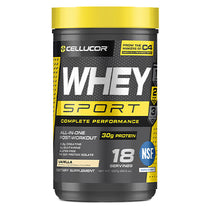
A diet that allows you to eat your favorite foods while still gaining results – sounds like a dream, but is it achievable? IIFYM gurus say so, opponents say not. Here we shed all suspicion and look purely at the evidence before helping you pick a side.
What is IIFYM?
IIFYM is possibly the most self-explanatory diet on the planet, its name meaning ‘If It Fits Your Macros’.
Arguably the quintessential flexible diet of the Internet Age, IIFYM was coined in the backwaters of fitness forums in the mid-2000s in response to a user asking whether it was ok to chow down on a chocolate bar.
Proponents of IIFYM hold that it is safe to consume any food or drink, be it a milkshake, donut or pizza, so long as ‘it fits your macros’ and you stay within your daily macronutrient quota of protein, carbohydrate, and fat.
The received wisdom behind this plan holds that neither your health nor physique will be negatively affected by IIFYM. Critics of the system have voiced their opposition and believe that there are clear and obvious dangers.
IIFYM: The Pros of Flexible Dieting
Getting cut with cakes
Heartset on investigating just how far you could take IIFYM, Mark Haub, a Professor of Human Nutrition at Kansas State University, began following a flexible diet based on junk foods such as Twinkies and Oreos.
These foods are American favorites, but would usually be discarded without a second thought from any healthy eating plan. Following this IIFYM strategy for an initial period of 10 weeks, Professor Haub limited his calorie intake to 1800 per day.
He found that he lost 27 pounds and improved his blood cholesterol levels, despite seeming to eat predominantly ‘unhealthy’ foods.
Athletic example
Perhaps the greatest swimmer in history, Michael Phelps fueled his training with a flexible diet that would make the menus at most breakfast diners blush.
In preparation for the 2008 Beijing Olympics, Phelps would begin his day by wolfing down a whopping stack of fried egg sandwiches, and would then finish the day with a small supper comprising a pound of pasta and a whole pizza.
Who could seriously argue with such an approach? Phelps brought home 21 Olympic gold medals – more than countries such as Argentina, Austria and Portugal have in their entire history. Phelps also stayed incredibly lean.
Sticking to the plan
The key to any flexible diet is adherence. The easier your diet is to stick to, the more likely you are to…you’ve guessed it – stick to it.
If your typical diet revolves around junk foods and you make a sudden transition to a brown rice and broccoli diet, chances are you will come 'unstuck' sooner rather than later.
An approach that still integrates some of your favorite foods is more likely to work. Think: swapping a large Coke for a diet version, and a deep pan pizza for a thin crust with a whole-wheat base.
IIFYM: The Cons of Flexible Dieting
Micros not macros
One of the main criticisms of IIFYM is that it places too much emphasis on macronutrients – and not enough on micronutrients (vitamins, minerals, and nutrients). These are crucial for optimizing your body composition and improving overall health. While the conclusion of Professor Haub’s study was that you could still get ripped with rubbish food, there was more than what first met the eye.
Haub was still consuming more than 80 grams worth of protein powder per day and also supplementing with multivitamins. This admits the importance of micronutrients and the need for nutrient-rich foods such as fruit and vegetables in any successful flexible diet.
What works for you
Michael Phelps’ flexible diet may make the filthiest of dirty bulks seem as clean as a whistle, but it’s worth remembering how different his daily routine may be to yours. In his prime, Phelps’ daily training time amounted to almost 12 hours. ‘Eat, sleep and swim – that’s all I can do’, Phelps once stated. It is highly unlikely that your energy requirements are even half of his, so your foods should naturally contain fewer calories.
Under an IIFYM plan, this may prove difficult to achieve as junk foods are extremely calorie dense. In only a few mouthfuls, you may hit your entire calorie quota for the day.
Behold the biomarkers
Physical health and fitness go beyond what you see in the mirror. You can gain muscle and drop body fat, but it doesn’t say much about your internal health. Biomarkers are signs such as blood sugar levels and bad cholesterol (LDL), and they say a lot for your internal health. Many foods rich in micronutrients contain phytochemicals – plant chemicals effective in promoting recovery and staving off serious disease.
Professor Haub’s blood cholesterol was arguably so low because he was supplementing with these trace vitamins. Free from supplementary vitamins, a junk food diet rich in trans-fat and sugar would almost certainly raise your biomarkers to unhealthy levels.
IIFYM – what is the overall opinion of Flexible Dieting?
IIFYM may prove a useful strategy in the short term, as it promotes adherence in the face of an unhealthy diet lacking in nutrients. This should not be taken as justification for gorging on everything in sight, however. If someone already has an unhealthy relationship with junk food then they may be prone to binge eating.
A flexible diet also goes beyond mere protein, carbs and fat and should be rich in micronutrients too. Whole foods should, therefore, form the basis of your diet, but where your calorie intake can afford it, a flexible approach to your favorite foods won’t do any harm.
Make IIFYM even easier on yourself by using a high-quality protein powder supplement like COR-Performance Whey to hit your macros. You need carbs and you need fat, but do you need them in your protein supplement? When you want the benefits of lean protein with minimal carbs and fat, COR-Performance Whey Isolate Protein Powder is second to none.
SOURCES: https://www.ncbi.nlm.nih.gov/pmc/articles/PMC3630450/











